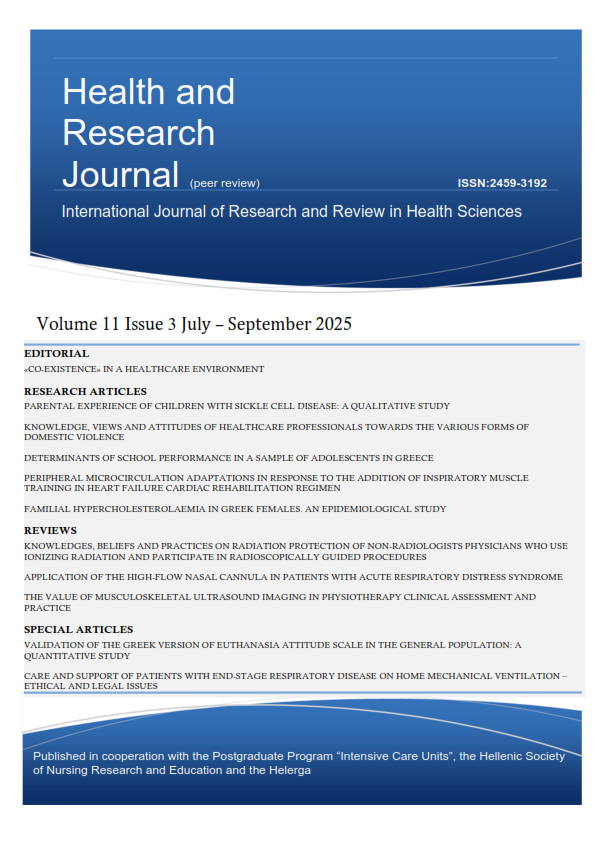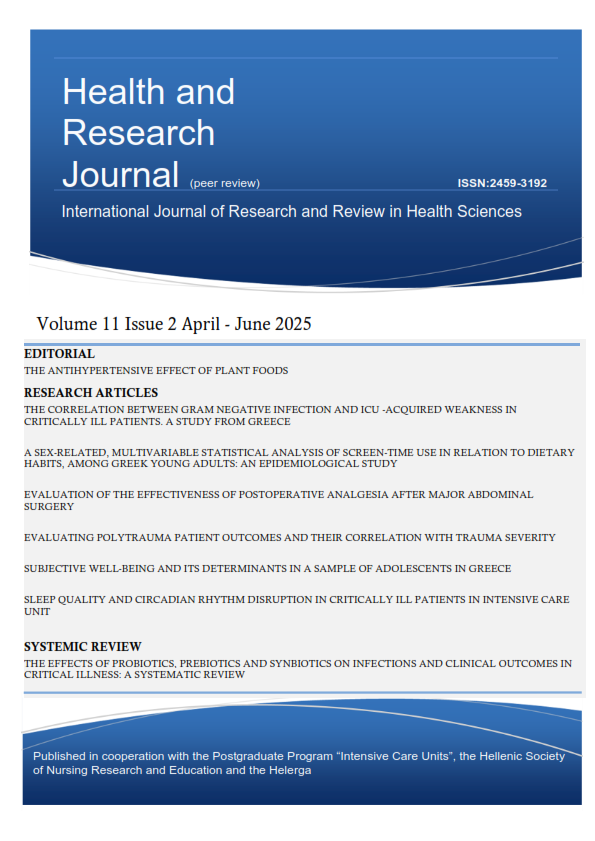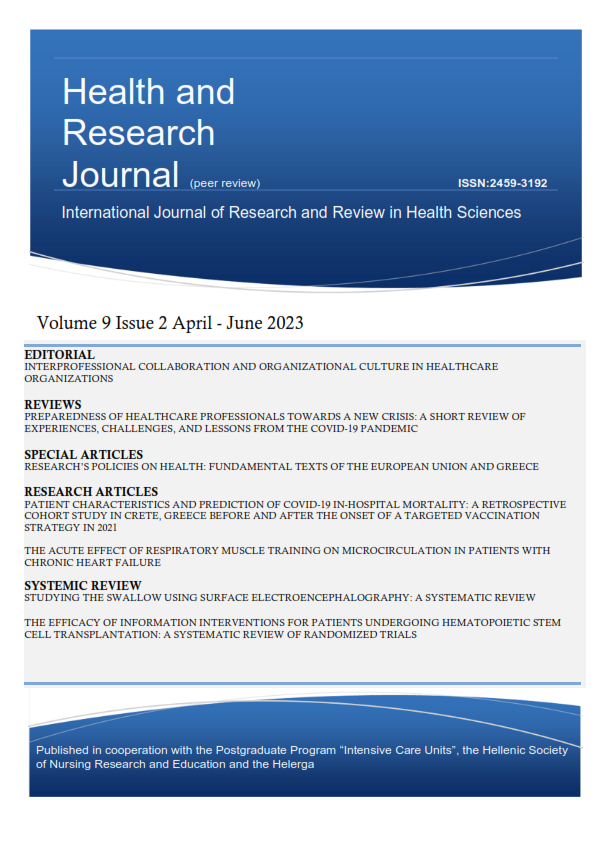Determinants of school performance in a sample of adolescents in Greece

Abstract
Background: A school environment that provides opportunities to learn, practice, and interact with peers can foster adolescents’ mental health and quality of life. School performance serves as an indicator of cognitive abilities and self-perceptions, which are essential for academic success and life satisfaction.
Methods: The study aims to assess the association between school performance and socio-economic factors, anthropometric characteristics, and sedentary behavior in a sample of 440 adolescents from 55 junior high schools in Athens and the surrounding area. School performance was assessed through the average overall score and scores in mathematics, language, and history from the last trimester of the curriculum. Logistic regression models were used to examine how socio-economic, personal, and anthropometric characteristics were associated with the risk of performing below the median (score <17/20).
Results: Overall, girls compared to boys (OR=0.44, 95%CI: 0.28 to 0.69) and members of privileged households compared to their less privileged counterparts (OR= 0.57, 95%CI: 0.32 to 1.03) were more likely to perform better at school. Adolescents of non-Greek origin (OR=3.70, 95%CI: 2.09 to 6.54) were more likely to perform worse compared to Greeks or Cypriots. The feeling of unsafety (OR=1.11, 95%CI: 1.02 to 1.20) was associated with performance below the median, whereas parents of higher- performing children were more likely to have higher education (OR= 0.53, 95%CI: 0.32 to 0.87).
Conclusions: These findings can be useful in designing, implementing and monitoring fit-for-purpose public health promoting strategies following a comprehensive and sustainable approach recognizing the adolescents’ multiple and variable needs.
Article Details
- How to Cite
-
Karava, E., Barbouni, A., Niforou, K., Benetou, V., Lagiou, A., Marinos, G., Lagiou, P., Naska, A., & Orfanos, P. (2025). Determinants of school performance in a sample of adolescents in Greece. Health & Research Journal, 11(3), 219–231. https://doi.org/10.12681/healthresj.40150
- Section
- Original Articles
Copyright notice:
The journal "Health and Research Journal" reserves the rights for copyright of the content of the website and also the copyright of the articles published.
By virtue of their appearance in this journal, the articles are free to be used for non-commercial purposes. However, the articles cannot and must not be used in anyway, published elsewhere or modified without any reference to the author and the first publication of the article.




